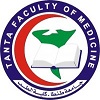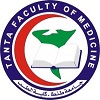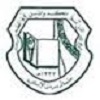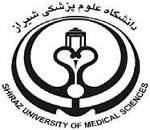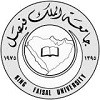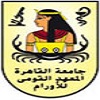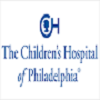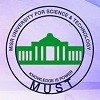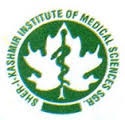Day 2 :
- Blood Cancer : Diagnosis
Blood Cancer : Staging
Session Introduction
Elena Zakharova
Botkin Memorial Teaching Hospital, Russia
Title: Renal Consequences of Blood Malignancies

Biography:
Elena Zakharova graduated the Faculty of General Medicine, Moscow Institute of Medicine and Dentistry (1981), and studied Nephrology as a Resident in the Research Institute of Transplantology and Artificial Organs. She is a Head of Nephrology Unit of Botkin Memorial Hospital (Moscow). She defended her PhD thesis and became an Associate Professor of Nephrology (Russian Medical Academy of Postgraduate Education). She is a member of professional societies: ERA-EDTA, ISN, ASN; and editorial boards of several International journals. Her field of professional interest: renal manifestations of systemic diseases, thrombotic microangiopathies and renal involvement in lymphoproliferative disorders, she has currently 113 publications.
Abstract:
Lymphoproliferative disorders represent heterogeneous group of diseases with a broad spectrum of clinical presentation, including variety of kidney lesions. Renal involvement is defined by numerous mechanisms: tumor mass localization; clonal cell expansion; deposition of secreted paraproteins, including organized (crystals, fibrils, microtubules), and non-organized deposits of monoclonal immunoglobulin’s or fragments thereof; hormones, cytokines and growth factors secretion; metabolic, electrolyte and coagulation disturbances; infection and drug-induced complications etc., affecting urinary tract, renal arteries and veins and all parenchymal compartments – intra-renal vasculature, glomeruli, tubules and interstitial space, sometimes simultaneously. Clinical presentation includes acute kidney injury, proteinuria and/or hematuria, nephrotic syndrome, arterial hypertension or chronic kidney disease. Differential diagnostics is the major challenge, often, but not obligatory demanding pathology evaluation. Pre-renal acute kidney injury, tumor-lysis syndrome, or urinary tract obstruction by lymph nodes can be diagnosed on clinical basis, but many conditions can not be differentiated in solely clinical setting. Importantly, symptoms of kidney damage may dominate and even preclude overt lymphoproliferative disease, and only pathology findings give the clue to the diagnosis. Renal consequences of myeloproliferative disorders include various paraneoplastic glomerular lesions and metabolic and drug-induced interstitial damages, also highly demanding pathology evaluation. We investigated the clinical presentation and the pathology patterns in more than 300 patients with blood malignancies, admitted to nephrology unit during 20 years, and evaluated clinical and pathology correlations. 2/3 of patients had not been diagnosed with blood malignancy before admission to nephrology unit; the diagnosis was a result of scrutinous work-up, guided by kidney pathology findings.
Mukul Gharote
Gujarat Cancer Research Institute,India
Title: Retrospective analysis of allele specific oligonucleotide-polymerase chain reaction ,as method for detection three BCR-ABL linase mutations (T315I, M351T AND F311L) in Chronic Myelogenous Leukemia patients treated with Imatinib Mesylate (TKI).

Biography:
Mukul Arvind Gharote has completed his D.M (doctorate in medicine) in Medical oncology at the age of 34 years from Gujarat university. He is Consultant of Hemato-Oncology in various reputed hopitals; Neptune 1 Superspeciality Hospital Nashik, Western Maharashtra and Six Sigma Hospital . He has published 4 papers in reputed journals . He is a co-investigator in 4 clinical trials in GCRI.
Abstract:
ASO-PCR is very rapid, cheap and sensitive technique for detection of KD mutations M351T, F317L, and F311C ABL mutation and is more sensitive than mutation detection by sequencing. Introduction: BCR-ABL Kinase domain mutations represent the most important disease-related factor in CML resistance. Highly resistant clones may preexist and emerge rapidly. ASO-PCR has high sensitivity in detecting pre-existing mutation, which in our retrospective analysis seems true, although ours was a retrospective analysis. Material & Method: Retrospective analysis of 50 patients of Imatinib resistance was done in GCRI, from January 2014 till may 2014. Response to Imatinib was defined according to European leukaemia net 2009 (ELN) criteria. Allelle Specific Oligonucleotide –Polymerase Chain Reaction (ASO-PCR) was performed on Genomic DNA, extracted from peripheral blood mononuclear cells (PBMCs).Results: Average age was 40.75years ,33 were males and 17 females. 47( 94%) were in Chronic phase, 2(4%) in accelerated phase, 1 (2%) in blastic crisis. 29/50 were having low EUTOS score , whereas SOKAl score was low in 20, intermediate in 21 while only 9 had high SOKAL at presentation. Median duration of Imatinib was 48 months. 43/50 had one or more than 1 mutation. T315I mutation in 5 (10%) patients. M351T in 32% (16/50) , F311L.in 8. Conclusion: Clinical correlates, speculate , that these mutation were pre-existing and were selected by standard dose Imatinib continued for median 4 years, detection of pre-exisiting mutation is not the current recommendation. We report low cytogenetic response (25%) and durability of response to 600 mg of Imatinib, even in M351T mutation, after 400 mg of Imatinib for median period of 2 years.
Taha Khattab
King Salman Military Hospital,Saudi Arabia
Title: How to overcome challenges met with during chemotherapy for childhood acute myeloid leukemia

Biography:
Taha Kahattab completed his Ph.D in pediatric in Nov. 1993 from Cairo University. He also completed his master in Pediatrics in 1984 .He graduated in Faculty of Medicine from Cairo University in 1979.His Activity in medical publication includes about 60 publications: 22 manuscripts at different pediatric hematology/oncology journals and about 38 abstracts: 32 as a first author and 6 as co-author He is also the owns Membership at national and international medical association like International Society of Pediatric Oncology (SIOP) since 2001, American Society of Clinical Oncology (ASCO) from 2002 to 2012, Saudi Pediatric Association since 2002, Saudi Society of Hematology since 2011.
Abstract:
Despite improvement in treatment of children with acute myeloid leukaemia (AML) over the past 3 decades, event-free survival EFS continue to be less than 50% in large series. The reasons for treatment failure include development of resistance to multiple drugs and treatment related mortality. Objectives: To aware medical staff with the parameters needed to predict different challenges found during chemotherapy and to show that prompt assessment and intervention would overcome such challenges. Discussion: Challenges could be divided into; disease, treatment and patients related. Risk stratification based on bone marrow cytogenetic and response to first cycle of chemotherapy as low, intermediate and high risk category where LR need chemotherapy only for cure while IR and HR would need chemotherapy and SCT for their cure. Coagulopathy secondary to acute promyelocytic leukemia (M3) should be dealt with induction remission by initiating chemotherapy and FFP with other blood products support as indicated. Refractory disease could be treated using second line of chemotherapy, FLAG, IDA-FLAG and subsequent SCT. Patients related challenges includes; prolonged (fever and neutropenia F&N), neutropenic enterocolitis (NEC), mucositis and cardiac dysfunction. F & N need combination broad spectrum antibiotics according to hospital pattern of isolated microorganism and sensitivity testing. Special antimicrobial as per clinical evaluation and site of infection. F & N > 4 days empiric antifungal should be added and C T fungal search to be arranged. NEC is a clinical diagnosis and could be managed by anti-anaerobic drug, nil per mouth, gastric decompression, IVF and pediatric surgeon involvement. Mucositis of oral mucosa and GIT could be associated with viral and bacterial infection, so specific antimicrobial as well as mouth wash and systemic analgesia is all indicated. Echocardiography need to be done before each cycle of anthracyclines. Patients related challenges like Rh negative female need anti rhogam injection before Rh + ve blood products, also central venous catheter CVC problems of infection and obstruction should be dealt with adequately by antimicrobial according to blood culture and sensitivity and its removal in case of +ve culture with Candida. CVC obstruction could be dealt with using heparin saline washing or TPA (tissue plasminogen activator). Conclusion: Cumulative experience of medical team for children with AML is now crucial. Using intensive timed chemotherapy together with extensive supportive care and SCT when indicated all would have an impact on improving outcome of childhood AML.
Pina J Trivedi
The Gujarat Cancer & Research Institute,India
Title: Cytogenetic heterogeneity as a prognostic indicator in Acute Myeloid Leukemia patients from India

Biography:
Pina J. Trivedi has completed her Ph.D. in March 2012 from Gujarat University. She has visited Bremerhaven, Germany during May 6th to 8th 2014 for workshop on Zytovision in Situ Hybridization. She is also one of the faculties in a Master degree course i.e. M.Sc. Cancer Biology run by GCRI. She is working in Cytogenetic department of The Gujarat Cancer & Research Institute (GCRI), Ahmedabad, Gujarat, and India.from last 18 years. She received a young scientist award for oral presentation in Indian Society of Human Genetics conference during 2005 in cytogenetics category. She has more than 41 publications in national and International journals.
Abstract:
Acute myeloid leukemia (AML) is a heterogeneous disease where diagnostic karyotype is one of the most powerful independent prognostic indicators in AML. It serves to identify biologically distinct subsets of disease. The chromosomal changes are the signature of gene deregulation in cancer and lead to instability of the genome The aim of the present study carried to appraise clinical significance of numerical and structural chromosomal abnormalities in 321 AML patients. Bone marrow/peripheral blood lymphocytes were carried out by cytogenetics and FISH and Multicolour FISH as and when required. Out of 321 patients, trisomy 8 found as sole, complex and secondary change. Along with most commonly observed recurrent chromosomal abnormalities, there were loss and gain of different chromosomes also observed. Recurrent translocations t(15;17),t(8;21) and inv(16) were observed in along with secondary changes. Rearrangements of 11q23 were observed in 12 patients. Mainly observed translocations were t(1;11), t(6;11), t(9;11), t(10;11), t(11;19) once only in different patients, del(11q23)(n=4), i(11q), t(11;17)(n=2). The loss of sex chromosome was observed in the highest frequency (n=20). Gain of whole chromosomes were; 8 (X23), 10 (X5), 19 (X7), 21 (X10), 22 (X6) and loss of X (X6), Y (X17). Frequent breakpoints in structural abnormalities were gain or loss of different chromosomes i.e. 1q (X8), 5q (X5), 8q (X4), 9q (X5), 11p (X5), 11q (X8), 17q (X9), and 22q (X 6).Study revealed that the, gain of chromosomal material was observed much more often than loss. Loss of tumor-suppressor genes might be involved in mechanism of leukemogenesis. Gain as numerical abnormalities may affect gene-dosage and may play a significant role in the pathogenesis of AML. Study highlights the clinical significance of cytogenetics as an independent prognostic indicator in AML, providing the allocation for a stratified treatment approach of the disease.
Mehrdad Payandeh
Kermanshah University of Medical Sciences,Iran
Title: Phase ІІІ of study of R-CHOP-21 vs. R-CHOP-14 for untreated stage III and IV B-cell Non-Hodgkin's Lymphoma: A report from Iran

Biography:
Mehrdad Payandeh is a MD from Kermanshah University of medical science (KUMS). He is a Chair of Hemophilia Center of Kermanshah city and Chair of Bone Marrow Transplantation Center of Kermanshah city. He has Eight years of experience in diagnoses and treatment of hematology, oncology, coagulative, BMT patient's disorder in private and university Hospital. He has published more than 70 papers in reputed journals and has been serving as an editorial board member of repute.
Abstract:
Combination of rituximab to Cyclophosphamide, doxorubicin, vincristine, and prednisone (R-CHOP) is one of the most effective front-line therapies to treat B-cell non-Hodgkin's lymphoma (NHL). The aim of this trial is to evaluate survival and toxicity of R-CHOP-14 compared to R-CHOP-21 in untreated stage III and IV B-cell NHL patients with Iranian ethnicity. In phase ІІІ trail, patients with previously untreated stage III and IV indolent and aggressive B-cell NHL were randomly assigned by using a minimization method to receive six cycles of either R-CHOP-21(arm A) or R-CHOP-14 (arm B). 143 patients were randomly enrolled in our study (66 patients in R-CHOP-14 group and 77 patients in R-CHOP-21). The mean follow-up was 45 months at the time of treatment analysis. 2-year and 5-year PFS rates for R-CHOP-14 group were 83.6% vs. 73.6% and for R-CHOP-21 group were 75% vs. 54%. The 2-year and 5-year OS rate for R-CHOP-14 group were 98% vs. 89% and for R-CHOP-21 group were 84.4% vs. 67.5%. There was significant correlation for PFS and OS in two arms (P<0.05), except for 2-year OS. Percentage of adverse events almost were similar in two arms and therefore there was no significant different between adverse events in two regiments. In our research that why survival improved with CHOP-14, like German group is still unknown, but it is probably drugs metabolism and its effects in different races/ethnicities are important factors. Also, adverse events in two our arms were very lower than other studies.
Khalid Ahmed Al-Anazi
King Fahad Specialist Hospital, Saudi Arabia
Title: Chronic lymphocytic leukemia in the era of molecular diagnostics and targeted therapies

Biography:
Khalid Ahmed Al-Anazi is currently working as consultant and chairman, Department of Adult Hematology and Hematopoietic Stem Cell Transplantation, King Fahad Specialist Hospital (KFSH) in Dammam, Saudi Arabia. He graduated from the college of medicine, King Saud University (KSU) in Riyadh, in the year 1986. After passing his Boards in Internal Medicine, he trained in clinical hematology and hematopoietic stem cell transplant at King’s College Hospital, University of London, U.K. He has 4 year experience in internal medicine and 23 year experience in adult clinical hematology and hematopoietic stem cell transplantation at Riyadh Armed Forces Hospital then King Faisal Specialist Hospital and Research Centre (KFSH&RC) in Riyadh, King Khalid University Hospital and College of Medicine, KSU in Riyadh and KFSH in Dammam, Saudi Arabia.
Abstract:
Chronic lymphocytic leukemia (CLL) is a monoclonal lymphoproliferative disease characterized by accumulation of mature lymphocytes due to disturbance in genetically regulated form of cell death [apoptosis]. It is the commonest leukemia in the west accounting for 10-35% of cases. The clinical course varies from indolent to aggressive. CLL has various clinical manifestations and several complications. The disease may be discovered accidentally or may present with lymphocytosis, anemia, thrombocytopenia, lymphadenopathy or hepatosplenomegaly. There are 2 staging systems: Rai and Binet. Also, the risk of disease can be classified according to specific criteria in order to tailor treatment accordingly. The patient may stay under watchful waiting for years as there are specific indications for therapeutic interventions. Over the last 50 years, management of CLL has advanced from supportive measures to cytotoxic chemotherapy and finally targeted therapies. Also, autologous hematopoietic stem cell transplantation (HSCT) has been replaced by reduced intensity conditioning form of HSCT. In the last few years, there has been a plethora of targeted therapies, monoclonal antibodies and immunotherapies such as ofatumumab, idelalisib, obatoclax, ibrutinib and vaccination therapy that may revolutionize the management of CLL. The recent advancements in the diagnostics and therapeutics are likely to translate into superior outcome and longer survival in patients with CLL.
- Treatment & Care
Blood Cancer : Other Aspects
Session Introduction
Lamiss Mohamed Abd Elaziz
Tanta University,Egypt
Title: Survivin as prognostic and predictive factor in patients treated with gemcitabine, dexamethasone, and cisplatin for relapsed or refractory aggressive NHL

Biography:
Lamiss Mohamed abd elaziz has completed his PhD at the age of 37 years from Tanta University and I am now assistant professor. She has published more than 9 papers in reputed journals and has been serving as an editorial board member of repute.
Abstract:
The prognosis of relapsed or refractory aggressive non-Hodgkin’s lymphoma (NHL) after frontline therapy remains poor. The development of more effective and less toxic salvage regimens remains a major challenge. Survivin is a member of the family of inhibitors of apoptosis, and survivin was associated with short survival and bad prognosis. This study was to evaluate the efficacy of GDP regimen on relapsed or refractory aggressive NHL and various prognostic factors with special emphasis on survivin. Material and Methods: Forty-six patients with relapsed and refractory NHL, intermediate or high-grade NHL (Revised European American Lymphoma Classification), who received at least one regimen were enrolled into this study, which was carried out at oncology Department, , Tanta University from July 2012 to July 2014. The patients were treated with GDP regimen every 3 weeks. The efficacy and adverse events were evaluated according to the WHO criteria. Results The overall response rate was 58.7 %. The 24-month overall survival was 50.8 %. Survivin is associated with low overall response and shorter overall survival. The present schedule of GDP showed modest efficacy and mild toxicity in patients with relapsed or refractory aggressive NHL.
Amr Mohamed Gawaly
Tanta University, Egypt
Title: BAX gene as a novel expressed tumor associated antigen in Acute Lymphoblastic Leukemia

Biography:
Amr Mohamed Gawaly is the Lecturer of Internal medicine department and hematology unit, Faculty of Medicine, Tanta University He obtained his MB.BCH in 2000, Master in internal medicine in 2005, and MD in internal medicine from Faculty of Medicine, Tanta University in 2011. Dr. Gawaly has attended several national and international seminars, workshops, and conferences related to stem cells, including Stem cell transplantation, haematological disorders, Clinical aspects of leukemia and lymphoma, training course for hematology and lymphoma, in Europe and Egypt. Dr. Gawaly is leading a group working on preclinical and clinical trials on the utility of stem cells in treatment of chronic leg ulcer and chronic leg ischemia. The flowing are examples of the scientific activities.
Abstract:
The response of Acute Lymphoblastic Leukemia (ALL) patients to cytotoxic drugs is markedly variable with unpredicted therapeutic outcome. Therefore, identification of new biomarkers is very crucial to envisage patient response to therapy. Among these possible biomarkers are BCL-2 family genes that are important determinants of chemotherapy-induced apoptosis. Bax gene is a pro-apoptotic gene, while Aven & Survivin are anti-apoptotic genes that their significance in diagnosis and prognosis of ALL remains a matter of controversy. Therefore, the aim of this study was to assess Bax, Aven and Survivin gene expression and its prognostic significance as regard overall survival (OS) and disease free survival (DFS) in ALL patients. Methods: amongst 57 patients diagnosed with de novo ALL, 32 patients were examined for Bax, Aven and Survivin expression, whereas, 25 patients were examined for Aven and Survivin expression. Patients were followed up for 15 months to evaluate survival. Results: Bax, Aven and Survivin gene expression were positive in 25%, 59.6% and 66.7% of ALL patients respectively. Cumulative overall survival for Bax +ve ALL patients was 25% which was significantly (p= 0.001) lower than that of Bax –ve (100%) ALL patients. The overall survival in patients with Survivin +ve, Aven +ve and –ve Bax was 100% that was statistically (p=0.019) higher than all other combination (66.7%). Moreover, disease free survival of the same group (14 patients) versus all other combination (18 patients) was statistically significant (P=0.011). Conclusions: whilst Bax expression in ALL patients was associated with bad prognosis, its absence showed improved survival, particularly in patients with Aven and Survivin concomitant expression. We showed that a single biomarker cannot reliably be used to predict response to therapy and it is likely that combination of biomarkers will be necessary to convey better prognostic criteria to ALL patients.
Haitham Eltigani Mohammed Ealawad
Omdurman Islamic University, Sudan
Title: The Possible Involvement of Epstein–Barr Virus in the Etiology of Leukemia in Sudanese patients

Biography:
Haitham Eltigani Mohammed Ealawad is an Assistant Professor in Virology and Immunology in Omdurman Islamic University, Sudan. He is an Executive Editor of Sudan Medical Laboratory Journal (SMLJ).
Abstract:
The research studies the etiology of Leukemia. No single known cause for all of the different types of leukemia exists. Controversial hypotheses was proposed suggesting the role of physical as well as chemical and even biological factors as being responsible for Leukemia incidents. The actual cause of Leukemia which is a serious cancer in Sudan is still under scrutiny. We hypothesized that EBV could be involved in the etiology of leukemia. We describe here the results of our attempt to find a possible link between leukemia and EBV. It is generally accepted that the (EBV) is an important etiologic factor in various tumors. Virtually little was reported about the relationship between EBV genes and leukemia. However, no full-length analysis of any substrain of EBV in Sudan area has been reported. The main objective of this study is to assess the incidence and the significance of EBV in patients with leukemia disorder using diagnostic parameters including cell Morphology, immunologic markers, and molecular investigations. Our findings provided evidence of the involvement of EBV in patients with leukemia. The results suggested that EBV DNA genome encoding the non-glycosylated membrane protein BNRF1 pl43 was observed in a significant proportion of patients with ALL. We could not exclude a correlation between these viral infections and later leukemogenesis in childhood ALL in Sudan. Further investigation on the link between maternal EBV reactivation and the development of ALL in offspring needs to be explored. Nor latent infection nor congenital infection cannot be excluded.
Mahdi Shahriari
Shiraz University of Medical Sciences, Iran
Title: Serum cancer antigen 15.3 concentrations in patients with betathalassemia minor compared to those with cancer and healthy individuals

Biography:
Mahdi Shahriari is currently working as an Associate Professor in Department of Paediatrics in Shiraz University of Medical Sciences, Iran since 1994. He has published many articles in reputed National & International Journals. His area of expertise include Medicine, Oncology, Hematology, Pediatric Hematology, Pediatric Oncology, Hemophilia, Thalassemia & Cord Blood Stem Cell Transplantation.
Abstract:
Background: High serum level of cancer antigen 15.3 (CA15.3) has been reported in some malignant and nonmalignant conditions including thalassemia major which could have been resulted from ineffective erythropoiesis. We aimed to evaluate the serum level of CA15.3 in carriers of beta-thalassemia by comparing them with cancer patients and healthy individuals. Methods: This cross-sectional study was done from February to December 2011 in Southern Iran. Participants consisted of 32 subjects with beta-thalassemia minor, 49 with cancer and 25 healthy individuals. The serum levels of CA15.3 were measured and compared in different groups. Results: The serum levels of CA 15.3 in all participants were in the normal range (<35 U/mL). Also it did not significantly differ among various groups of the participants (p=0.723). Age was not significantly correlated with the serum level of CA 15.3 (r= 0.039, p=0.702). The most frequent cancer in the group of patients with malignancies was hematologic malignancies (96%) with the highest frequency for acute lymphoblastic leukemia (37 patients). Frequency of thalassemia minor in patients with cancer was 11 (22.4%). Conclusion: No correlation was found between CA 15.3 serum level with beta-thalssemia minor or with childhood malignancies. Compared to general population, a high proportion of beta-thalssemia minor was observed in patients with cancer in our study. Future prospective studies are needed to evaluate the relationship between cancer and beta-thalassemia minor accurately.
Fatherlrahmen Gameel
King Faisal University,Saudi Arabia
Title: Modification of Haematological Paramters in Radiation and benzine Exposure laborers As risk issue for Blood cancer

Biography:
Fathelrahman M. Hassan has completed his PhD in 2007 from Sudan University of Science and Technolohy. He is assocate professor in the department of biomedical science, College of Medicine King Faisal University. He has published more than 23 papers in reputed journals and has been serving as an editorial board member of repute.
Abstract:
The radiation or benzene influences human body in very confounded processes. Various degrees of organic effects, from harm to death of living tissues, involve various obsessive changes in human cells. This study was to think about the changes of complete blood consider as a real part of Sudanese radiation and petroleum station laborers in Khartoum state to identify the impacts of introduction to radiation waves and benzene harmfulness laborers contrasted and control. We randomly choose 150 individuals isolated them into three gatherings (50 radiation laborers, 50 from petroleum stations labourers and 50 setting as control gatherings). Histories and blood samples were taken from all study bunches. Haematological investigations were performed utilizing Fully Automated Hematology Analyzer SYSMIX (Japan). The outcomes demonstrated a great degree of measurably noteworthy diminished in platelets levels among radiation laborers while all parameters were criticalness diminished among benzene laborers contrasted with control (p. value < 0.05). Additionally, we watched a critical expanded in eosinophils and basophils levels in benzene laborers. The platelets qualities identified with the length of time of radiation laborers was importance expanded, while among benzene laborers the eosinophils and basophils qualities were hugeness expanded. The study recommends that the benzene laborers are at higher danger to different wellbeing risks when contrasted with the individuals who are not presented and to radiation laborers. Centralization of radiation or benzene must be measured for appropriate defensive of laborers, and the term of laborers including was prescribed to recognize the base period identified with introduction to illuminate them about the wellbeing issues connected with radiation wave and benzene harmfulness.

Biography:
Abstract:
Introduction: Acute myeloid leukemia (AML) is a heterogeneous clonal stem cell malignancy characterized by proliferation of immature hematopoietic cells. Adipokines in particular leptin and adeponectin are novel, highly active molecules that have attracted considerable interest due to their potential role in the development of cancer as a risk factor. We aimed to measure the body mass index, serum levels of leptin and adiponectin in AML patients, correlating these levels with standard prognostic markers of the disease. Materials and Methods: A total of 60 newly diagnosed AML Egyptian patients attended to NCI, Cairo University and twenty healthy controls age and sex matched were enrolled. Diagnosis was based on WHO criteria. All patients had Complete blood counts, bone marrow aspiration/biopsy specimens, EDTA peripheral blood or bone marrow aspirate specimens for flowcytometry analysis, and heparinised sample for cytogenetic study. Serum Leptin and Adiponectin were assayed in both patients and controls by enzyme linked immune assays. Results: Serum Leptin were determined at a level of 10.9±9.5 ng/ml in the patient group which is significantly lower than the controls 60.2±165.6ng/ml (p< 0.02). Serum adiponectin showed highly significant lower levels in the patient group compared to controls 1.5±0.9 and 4.6±2.9 respectively (p<0.001). No significant correlation was detected between serum adipokines (leptin & adiponectin) and other clinical, or laboratory parameters except a negative significant correlation was detected between serum adiponectin and bone marrow blast cell percentage. According to cytogenetic analysis, patient group was divided into two risky subgroups: favorable (n=20), intermediate and unfavorable (n=40). No significant correlation between cytogenetic and serum leptin and adiponectin levels (p=0.98, 0.38) respectively. The current study addressed the reduction of adiopcytokines levels in de novo AML together with negative correlation between bone marrow blasts and adiponectin levels suggesting the implication of adipocytokines in pathogenesis of AML, however these findings necessitate additional studies of adipocytokines in AML patients and to be related to other risk factors as severe illness, altered energy balance and disease complications on large scale of cases
Vijay Ramanan
Yashoda Hematology Clinic, Pune, India
Title: Management of acute myeloid leukaemia in elderly and resource constrained setting

Biography:
Vijay Ramanan, MD (Med), DM (Clin, Haemat), Sr. Consultant Clinical Haematologist
is the Director, Clinical Hematology, Bone Marrow & Stem Cell Transplant department. He completed his MBBS from B J Medical College, Pune. He finished his MD (Gen Med) standing first in Pune University and again was the gold medalist in Christian Medical College, Vellore, in Clinical Hematology. He is member of American Society of Hematology, European Hematology Association, International Society of Thrombosis and Hemostasis, European Society of Blood and Bone Marrow Transplant. He heads the support groups for Thalassaemia and Hemophilia.
Over 3000 patients of Thalassaemia, Leukaemia, Myeloma, Aplastic Anemia, bleeding and clotting disorder patients have taken treatment under his guidance.
The department handles highest number of Pediatric leukaemia and pediatric thrombophilia in Western India. The benefit of novel therapies in Thalassaemia, Leukaemia discovered by him are being provided to needy through MVR Foundation.
He has many international presentation, papers, and chapters in textbook.
Abstract:
Currently, only about 20% of Indian AML patients can afford the standard therapy of 7+3 followed by HIDAC. The stem cell transplant option is financially accessible to an even smaller subset. There is a huge unmet need for an affordable treatment option for the vast majority of the population. We believe that our innovative approach of using lenalidomide with cytosine is a viable option for treating a vast majority of patients with elderly AML, relapsed AML financially challenged segments of the population, and brings hope to this neglected demographic. For this underserved demographic subset, we came up with an innovative protocol of Oral Lenalidomide and Subcutaneous Cytosine. We found that: Lenalidomide-Cytosine is an option for the elderly AML patients who are hemodynamically stable. Remission seems to take a longer time - about 60 days. The effects of combining this with traditional options will need more clinical trials to elucidate. The option of adding azacytidine or decitabine is being considered but with lenalidomide alone. Another approach that may be considered is the addition of an intermediate dose cytarabine after achieving remission. Thus, we have tried to summarise treatment options for elderly AML with specific reference to cytosine-lenalidomide combination.
Shimon Slavin
International Center for Cell Therapy & Cancer Immunotherapy ,Israel
Title: Innovative immunotherapy for prevention and treatment of relapse relapse following conventional chemotherapy or stem cell transplantation

Biography:
Shimon Slavin, MD, Professor of Medicine, pioneered the use of personalized anti-cancer immunotherapy mediated by donor lymphocytes and innovative methods for stem cell transplantation for malignant and non-malignant disorders, including treatment of autoimmune diseases and induction of transplantation tolerance to bone marrow and organ allografts. More recently, Slavin pioneered the use of multi-potent mesenchymal stromal cell for regenerative medicine. Slavin authors 4 books, 660 scientific publications and serves on many editorial boards and many national and international advisory boards. Slavin received many international awards in recognition of his contributions for treatment of malignant and non-malignant disorders.
Abstract:
Immunotherapy represents the treatment of choice against chemo-radioresistant malignant cells and cancer stem cells that are a prioi resistant to anti-cancer modalities. The documented therapeutic effects of donor lymphocyte infusion (DLI) following maximally tolerated myeloablative chemoradiotherapy following allogeneic stem cell transplantation (SCT) suggests that cell-mediated immunotherapy may represent the treatment of choice for elimination of otherwise resistant malignant cells. Accordingly, we have developed a new approach for induction of graft-vs-malignancy (GVM) effects by intentionally mismatched IL-2 activated killers (IMAK) while avoiding GVHD following conventional chemotherapy or haploidentical SCT using reduced intensity conditioning (RIC) followed by post-transplant elimination of host and donor’s alloreactive T cells for prevention of rejection and GVHD. Long term GVM effect was induced post-SCT by IL-2 activated donor NK cells prepared by negative selection of CD3+ T cells or positive selection of CD56+ NK cells. Mismatched NK cells induced most effective GVM while avoiding GVHD in patients with resistant relapsed leukemia. Short-term GVM effects with no prior SCT was accomplished by haploidentical or unrelated IMAK activated in vitro and in vivo following infusion with low dose IL-2 for 5 days. More effective and more selective GVM effects against residual cancer cells could be accomplished using monoclonal or bispecific antibodies bound to Fc receptors on killer cells targeting killer cells against antigens over-expressed on malignant cells (e.g. Rituximab or Pinatumomab against B cell malignancies). Using IMAK against MRD following conventional chemotherapy or SCT can result in cure of otherwise resistant hematological malignancies while avoiding GVHD.
Stephan Grupp
Children's Hospital Philadelphia,USA
Title: Chimeric Antigen Receptor–Modified T Cells for Acute Lymphoid Leukemia

Biography:
Stephan A. Grupp, is Director of the Cancer Immunotherapy Frontier Program, Director of Translational Research for the Center for Childhood Cancer Research at Children’s Hospital of Philadelphia and Medical Director of the Stem Cell Laboratory. He was trained at Harvard, at Boston Children’s and the Dana Farber Cancer Institute. He is also working with Pediatric Hematology/Oncology trainees as Fellowship Director at the Children’s Hospital of Philadelphia.
Abstract:
Chimeric antigen receptor–modified T cells with specificity for CD19 have shown promise in the treatment of chronic lymphocytic leukemia (CLL). It remains to be established whether chimeric antigen receptor T cells have clinical activity in acute lymphoblastic leukemia (ALL). Two children with relapsed and refractory pre–B-cell ALL received infusions of T cells transduced with anti-CD19 antibody and a T-cell signaling molecule (CTL019 chimeric antigen receptor T cells), at a dose of 1.4×106 to 1.2×107 CTL019 cells per kilogram of body weight. In both patients, CTL019 T cells expanded to a level that was more than 1000 times as high as the initial engraftment level, and the cells were identified in bone marrow. In addition, the chimeric antigen receptor T cells were observed in the cerebrospinal fluid (CSF), where they persisted at high levels for at least 6 months. Eight grade 3 or 4 adverse events were noted. The cytokine-release syndrome and B-cell aplasia developed in both patients. In one child, the cytokine-release syndrome was severe; cytokine blockade with etanercept and tocilizumab was effective in reversing the syndrome and did not prevent expansion of chimeric antigen receptor T cells or reduce antileukemic efficacy. Complete remission was observed in both patients and is ongoing in one patient at 11 months after treatment. The other patient had a relapse, with blast cells that no longer expressed CD19, approximately 2 months after treatment. Chimeric antigen receptor–modified T cells are capable of killing even aggressive, treatment-refractory acute leukemia cells in vivo. The emergence of tumor cells that no longer express the target indicates a need to target other molecules in addition to CD19 in some patients with ALL.
Ayman M Metwally
Misr University for Science and Technology, Egypt
Title: FLT3 ITD mutation, cMPL and CD34 expressions predict low survival in acute myeloid leukemia patients

Biography:
Ayman M. Metwally has a PhD in Cancer Biology (Biochemistry) from the National Cancer Institute Cairo University, Egypt on 2007. He is an assistant professor at the College of Applied Medical Sciences, Misr University for Science and Technology. Ayman had 2 postdoctoral fellowships; the first was to France on 2009 at both Paoli Calmettes Cancer center Marseille and INSERM U 685, Centre Georges Hayem, Saint Louis Hospital, Paris. The second fellowship was on 2011 to USA in Cancer Biology Department, University of Massachusetts Medical School, Worcester, MA. He performed research in different areas in cancer biology and published several research papers in different areas of cancer research.
Abstract:
Objectives: To detect FLT3 ITD mutation, cMPL and EphA4 expressions in acute myeloid leukemia (AML) and their correlation to patient's clinicopathological characteristics and survival. Methods: RNA was extracted from blood samples of 58 AML patients (39 adults and 19 children) and 20 age and sex matched controls. FLT3 ITD mutation, cMPL and EphA4 expression was studied using rt-PCR and correlated to the clinical and survival data of the patients. Results: FLT3 ITD, cMPL and EphA4 expression was positive in 35.9%, 76.9% and 56.4% of adult AML patients respectively and in 15.8%, 47.4% and 36.8% of pediatric AML patients respectively. 76.9% of adult and 89.5% of pediatric patients expressed CD33. 64.1% of adults and 42.1% of children expressed CD34. CD34 expression was significantly associated with both FLT3 ITD and cMPL expression. CD34, FLT3 and cMPL negative cases have significantly higher overall survival than positive cases. Conclusion: CD34 expression is significantly associated with both FLT3 ITD mutation and cMPL expression which could be used as a marker for low survival. Normal FLT3 and negative expression of CD34 and cMPL may predict a longer overall survival. Further studies are needed to investigate the mechanism that may correlation CD34 to both markers.
Mohammed A. Albalawi
Taibah University,Saudi Arabia
Title: Molecular and Cytogenetic Markers in Acute Myeloid Leukemia

Biography:
Mohammed A. Albalawi is an associate professor at Taibah University, Madinah, Saudi Arabia. He is a member of the Saudi Society of Blood and Marrow Transplantation (SSBMT). He is also a member of the Saudi Hematology Society (SHS). He as the medical deputy of the BMT unit at Prince Sultan Military and Medical City (PSMMC). Currently working at Saudi Germany Hospital in al Madinah al Munawarah
Abstract:
Acute myeloid leukemia (AML) is a disease of hematopoietic progenitor cells with acquisition of heterogeneous genetic abnormalities that cause abnormal cell growth, proliferation and differentiation. Cytogenetic abnormality is considered an important prognostic factor in AML patients. AML patients are prognostically classified into three groups (favorable, intermediate, and poor) based on their molecular and cytogenetic analysis. Clonal chromosomes alterations are detected in approximately 50-55% of adults with AML. However, 40% to 49% of adults and 25% of children with AML, have no detectable chromosomal abnormality can be found on standard cytogenetic analysis. These cytogenetically normal (CN) patients have been classified as an intermediate-risk. Recently, with the advent of next generation sequencing, different molecular genetic abnormalities have been found in AML such as DNMT3A, TET2, IDH1/2, NRAS, KRAS, BCOR, RUNX1, and WT1. However, the significance of many of these gene mutations is unclear.
Aleem Jan
Sher-I-Kashmir Institute of Medical Sciences,India
Title: Acute promyelocytic leukemia: one more success story

Biography:
Dr Aleem jan after obtaing his M.D. in 1993 persued his interest in discipline of Haematology by doing seniorfellowship in Haematology and BMT from Christian Medical college Vellore Tamil nadu India and Further from M.D.Anderson cancer centre U.S.A. University of Texas in BMT and cellular therapr. He has more than 40 publications in indexed journals and is on editorial board of reputed journals.
Abstract:
The success story of childhood acute lymphoblastic leukemia, has transformed the outlook of Haem –oncology and correction of coagulopathy as a medical emergency targetting fibrinogen levels in safe range with concommitant start of ATRA + anthracyclines or Arsenic trioxide is replicating this success story in APML. Acute promyelocytic leukemia( APML) is a unique subset of acute myeloid leukemia with first description as unique entity in 1957.The disease is identified by distinctive morphology and a balanced reciprocal translocation between chromosome(t15:17). Historically Acute promyelocytic leukemia is charecterised by a rapidly fatal course with high incidence of early death. Current recommendations are that when a diagnosis of APL is suspected based upon clinical presentation and or morphology, the disease should be treated as medical emergency. Urgent administration of ATRA should be instituted with aggressive supportive care including blood product support with platelets and cryoprecitate while genetic diagnosis is established. Risk stratification is imperative in the treatment of APL patients as those with low risk disease (WBC <10,000, platelet> 40,000) are generally treated with less intensive protocol than those presenting with high risk disease ( W.B.C >10,000) corresponding to initial criteria by.Sanz et al of WBC 10,000 and platelet 40,000. We at our centre do also look at CD 56 and BCR2. APL has evolved from ATRA+ chemotherapy for all patients to addition of Aresenic trioxide (ATO) to ATRA with omission of chemotherapy.. We at our centre are treating APML with ICP 2006 protocol which has ATRA + Anthracycline in induction with Dexamethasone for 2 weeks if counts more than 5,000. Dose of ATRA for paediatric population is 25mg/m2. Following induction we employ three consolidation blocks and in high risk cases cytosine arabinoside is incorporated. Molecular remission is documented by RQ PCR for PMLRAR α before maintenance for 2 years with 6 mercaptopurine weekly methotrexate and 3 monthly ATRA for 15 days.We believe in resource depleted countries and in camatose patients ATO is no inferior drug.it is administered in dose of 0.15mg/kg body weight until remission with close monitoring of APL syndrome and complications by weekly LFT,KFT,coagulogram,ECG for QT intervel. After documenting molecular remission maintenance is given for six months with same dose daily for 10 days. Over a period of 5 years we treated 57 cases of APML out of which 12 were paediatric cases ATRA + chemo as well as ATO based protocols were used.Results are encouraging and worth sharing.in meet. We do have relapse /refractory cases in whom ATRA +ATO is employed till remission. Given logistic difficulties in procuring anti CD 33(GO), autologous in PCR negative and allogenic BMT in PCR positive cases is undertaken.




